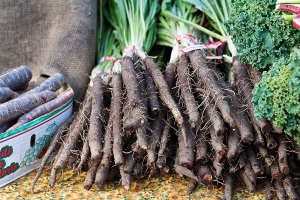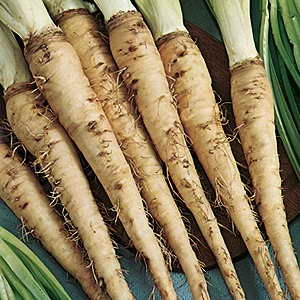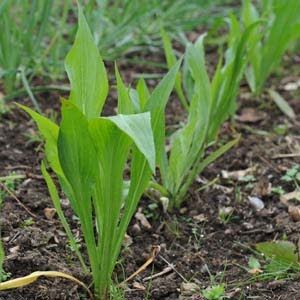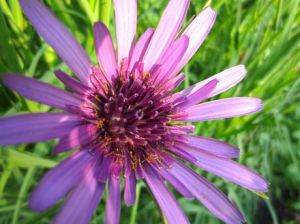 Corporate chain grocery stores and the industrialization of our food supply has decreased the diversity of vegetables people consume. There are, however, a few movements working to combat such trends. In Europe and Japan, for instance, a resurge of traditional community markets, with a focus on traditional foods, has been taking place. In many places in the world, those markets have never left. These family and small farm supplied markets have kept many traditions and heirloom crops from extinction.
Corporate chain grocery stores and the industrialization of our food supply has decreased the diversity of vegetables people consume. There are, however, a few movements working to combat such trends. In Europe and Japan, for instance, a resurge of traditional community markets, with a focus on traditional foods, has been taking place. In many places in the world, those markets have never left. These family and small farm supplied markets have kept many traditions and heirloom crops from extinction.
In places like the US, farmers markets have become popular, and the people who supply these markets are taking a strong interest in heirloom crops. Salsify and scorzonera are good examples of vegetables that have eluded the grocery stores. Only European street markets and farmers’ markets in the US have ever made such a vegetable available to the consumer. Well, of course, the adventurous gardeners have often found this lively vegetable. My first encounter was, indeed, in a garden. Salsify and scorzonera are winter root crops in our arid land, mild-winter climate. Start them from seed in the fall–they usually need a good growing season, so don’t wait too late. Depending on the variety you choose it could be anywhere from 80-120 days to maturity. Plan accordingly.
Soil should be moderately enriched. Like most root crops, too much nitrogen will result in lesser developed roots and very foliated plants. While the soil does not need to be very rich, it DOES need to be well-prepared. These guys root DEEP. So make sure you have taken out all the large stones and such that might exist in the root zone. Dig down at least 1.5 feet, though I prefer to prepare three feet down. Plants should be grown in full to mostly full sun. Feed occasionally with kelp meal and compost tea. Mulch plants well to keep soil moisture and temperature even. Pay attention to the dimensions of the species and variety you choose (such information is usually on the seed packet but check the catalog if you don’t see it there). In general, however, plants should be spaced about 6-8 inches apart. Keep plots well weeded, using your hands. Roots are easily damaged. I emphasize even watering. Erratic watering may cause roots to crack. Plants may live for more than one season, much like burdock, of which they are related. So when you plant them, you might choose a semi-permanent spot. Plants that have been left behind (not harvested) can be cut back to produce “chards”, edible shoots (I have not tried this yet). Growing salsify and scorzonera in Tucson is easy but very few people have tried. So there is a lot of
experimentation left to do with planting. Scorzonera (Scorzonera hispanica) is generally a darker colored root than salsify (Tragopogon porrifolius). There are two ways of cooking these vegetables: the roots can be washed, and boiled or steamed before peeling when cold. They are used in stews, casseroles, baked dishes and soups, and cooked before use in stir-fries, and can be sliced and fried too. The new growth at the top of the plants (called “chards”) can also be used in spring, cooked like asparagus or used is salads. These tops can be forced in darkness, much as chicory, which is also related. Salsify and Scorzonera both have a delicate oyster-like flavor. Oh, and if you let them flower, you will be pleasantly surprised. They have gorgeous flowers. There are other species of both salsify and scorzonera which can probably grow well enough in Tucson. If you happen upon some in a seed list, TRY THEM and let us know how you do with them. You can get seed from Gourmet Seed International, Johnny’s Selected Seeds or Seeds of Italy.


